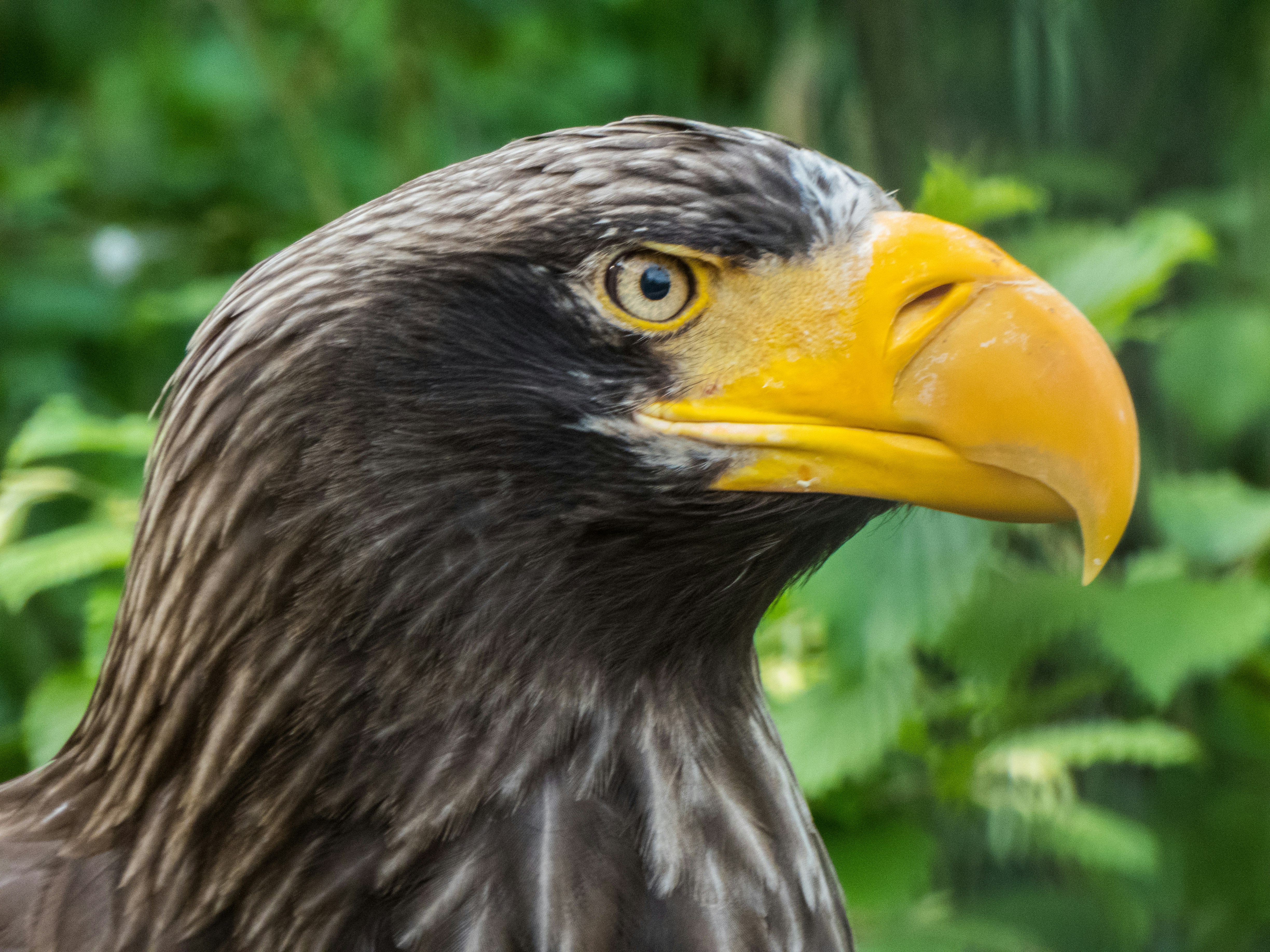Now Reading: Eye See You: Fascinating Facts About Eagle Vision
- 01
Eye See You: Fascinating Facts About Eagle Vision

Eye See You: Fascinating Facts About Eagle Vision
The Anatomy of Eagle Eyes
Eagle eyes are renowned for their remarkable vision, which is largely attributed to a series of unique anatomical features that set them apart from human eyes. One of the most notable differences is the sheer size of eagle eyes, which can occupy a significant proportion of their head. This expanded size allows for a wider field of view and increased sensitivity to movement, enabling eagles to spot prey from great distances.
The shape of eagle eyes also contributes to their exceptional vision. Unlike human eyes, which are more spherical, eagle eyes have an elongated, flattened shape. This design aids in the perception of depth and distance, crucial for their hunting prowess. Additionally, eagles possess a higher density of photoreceptors, specifically cone cells, than humans. These cone cells are responsible for color vision and visual acuity, allowing eagles to perceive a broader spectrum of colors, including ultraviolet light, which is invisible to the human eye.
Central to the exceptional vision of eagles is the fovea, a small pit in the retina where visual acuity is maximized. Eagles typically have two foveae in each eye, granting them unparalleled sharpness and clarity when focusing on objects. This dual-fovea system enhances their ability to detect fine details, whether locating small prey or navigating through complex landscapes.
Additionally, eagles possess a third eyelid, known as the nictitating membrane. This translucent membrane plays a critical role in protecting the eye without obstructing vision. It functions by providing a layer of moisture and shielding the eye from debris during flight or while hunting in various environments. The presence of this specialized structure further underscores the adaptability and evolutionary excellence of eagle vision.
Superb Acuity: The Power of Vision
Eagles are renowned for their exceptional vision, a trait that distinguishes them as some of the most formidable hunters in the avian world. Their eyesight is not just remarkable; it is pivotal for their survival. Research indicates that eagles possess visual acuity that is 4 to 8 times better than that of the average human. This acute eyesight allows them to detect movements and identify prey from impressive distances, sometimes up to 3 miles away. Such capability is powered by their unique eye structure, which features a high density of photoreceptors and specialized retinas, optimized for spotting minute details even at great ranges.
One of the primary advantages of eagle vision lies in their ability to perceive a broader spectrum of colors, including ultraviolet light. This enhanced color perception enables them to pinpoint the trails left by prey, such as urine marks, that are invisible to other animals. Furthermore, eagles have excellent depth perception, allowing them to accurately judge distances while swooping down to capture their food. For instance, a Bald Eagle can dive at speeds exceeding 100 miles per hour when hunting, relying heavily on its exceptional sight to ensure precision in its catch.
The implications of this superior vision extend beyond mere hunting capabilities; they are integral to their overall survival strategies. In the wild, eagles often survey large areas from high vantage points, using their vision to assess not only potential prey but also threats from competitors or predators. For example, a Golden Eagle might soar high above its territory, scanning the ground and watching for an unfortunate rodent, all while being alert to the presence of rival birds. Thus, the power of eagle vision is a multifaceted asset that directly influences their success in the wild, shaping their behavior and adaptability to various environments.
Color Perception and Polarization: A Bird’s Perspective
Eagles possess an exceptional capability for color perception that significantly enhances their hunting and navigation skills. Unlike humans, who have three types of color receptors, eagles have up to five types, allowing them to see a broader spectrum of colors. This includes the ability to detect ultraviolet (UV) light, which is invisible to the human eye. This specialized vision provides eagles with a remarkable advantage in identifying potential prey and variations in their environment.
The detection of UV light plays a crucial role in how eagles locate their food. For instance, urine trails left by rodents and other animals reflect UV light, making them highly visible to eagles soaring above. This ability to discern subtle contrasts that are otherwise undetectable greatly increases the chances of successful hunting. The significant enhancement in color perception not only aids in locating prey but also assists eagles in navigating their territories, helping them to identify landmarks and other vital environmental elements effectively.
In addition to their superior color vision, eagles also possess polarization vision, which is another remarkable adaptation. This ability allows them to detect patterns of light that are oriented in specific directions. As polarized light often corresponds to surfaces such as water or the brightness of the sky, eagles can use this information to see prey that may be hidden by glare or reflections. The combination of color perception and polarization vision significantly improves their hunting efficiency, enabling them to spot camouflaged or distant prey, even against a brightly lit backdrop.
The intricate adaptations of eagles’ visual systems highlight not only their predatory prowess but also the complex interplay between biology and survival in the natural world. Through their enhanced color perception and polarization vision, eagles exemplify the extraordinary capabilities of avian species.
Adaptations to Environment: Vision in Action
Eagles exemplify remarkable evolutionary adaptations that enhance their vision across various habitats, allowing them to thrive in diverse landscapes such as forests, open fields, and mountainous regions. The sophisticated structure of an eagle’s eyes is a key factor in their visual capabilities, which have been finely tuned to meet the specific demands of their environment. With a wider field of view and a higher density of photoreceptor cells, particularly cone cells, eagles are able to detect even the minutest movements of prey from considerable distances.
In forested areas, eagles rely on their exceptional depth perception and ability to see in low light conditions, which allows them to navigate dense foliage. For instance, the golden eagle is known for hunting in wooded regions, demonstrating a keen ability to adjust its vision according to the underbrush and tree cover. The varying light conditions, such as shadows cast by branches, may challenge visibility; however, the eagle’s eyes are equipped to compensate for these changes, thereby enhancing their hunting prowess.
Open fields present a contrasting environment, where eagles like the Wedge-tailed Eagle exhibit keen eyesight to spot small animals from lofty heights. Their acute vision enables them to discern minute details from great distances, crucial for hunting in a more open landscape. Similarly, in mountainous regions, eagles often soar at high altitudes, allowing them to utilize the vast expanses below for hunting. The ability to detect subtle movements across rugged terrain is a vital adaptation, ensuring successful navigation and hunting.
Weather patterns also influence eagle adaptions. For instance, some species can modify their hunting techniques based on light variations caused by overcast conditions or heavy rain. As light conditions fluctuate, eagles demonstrate remarkable agility and responsiveness, showcasing their innate ability to adapt visually to their surroundings. These adaptations underscore the evolutionary significance of eagle vision in ensuring survival and success across varied habitats.













